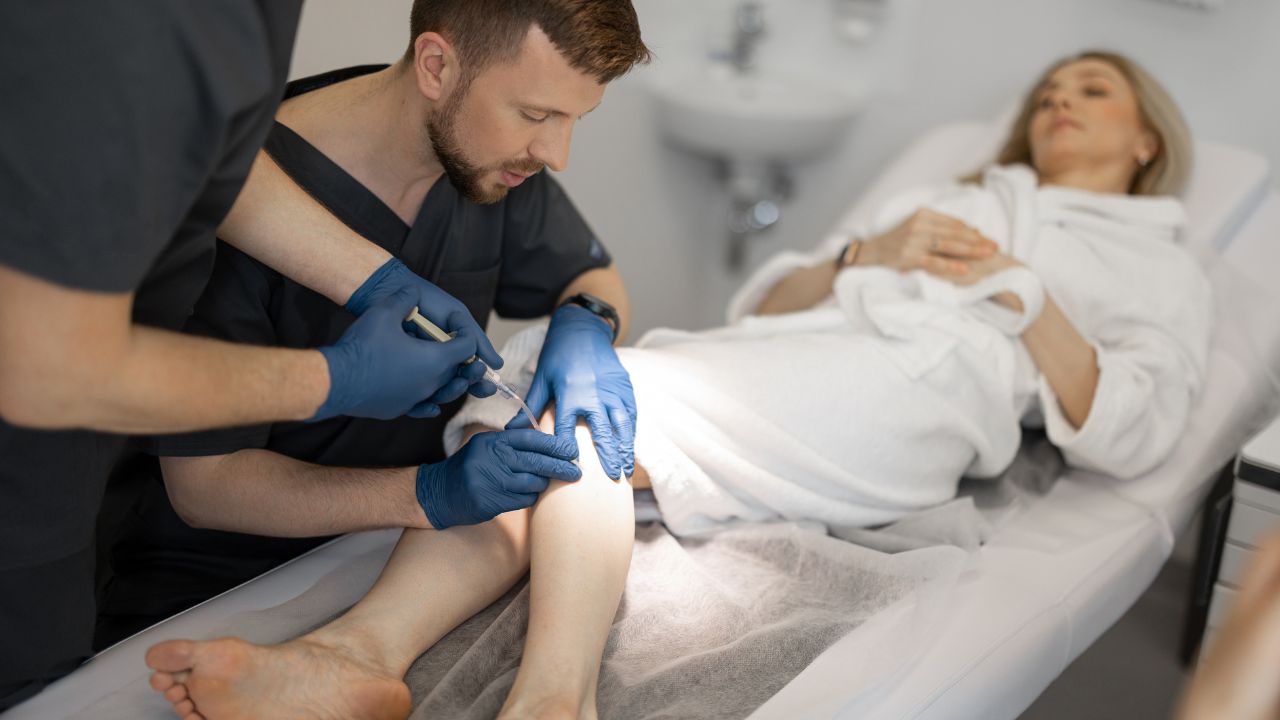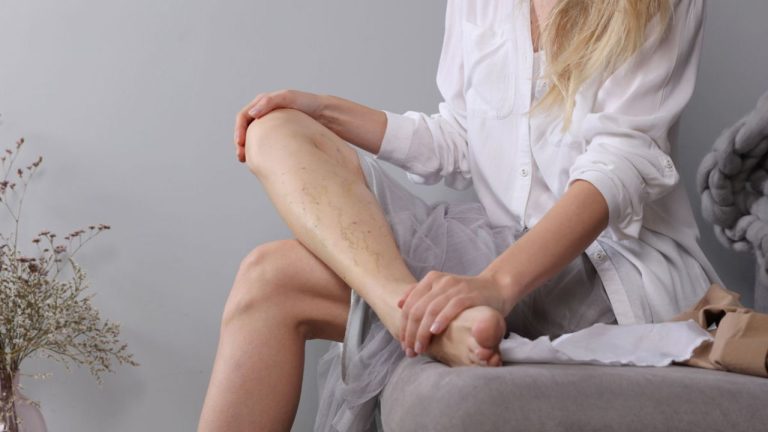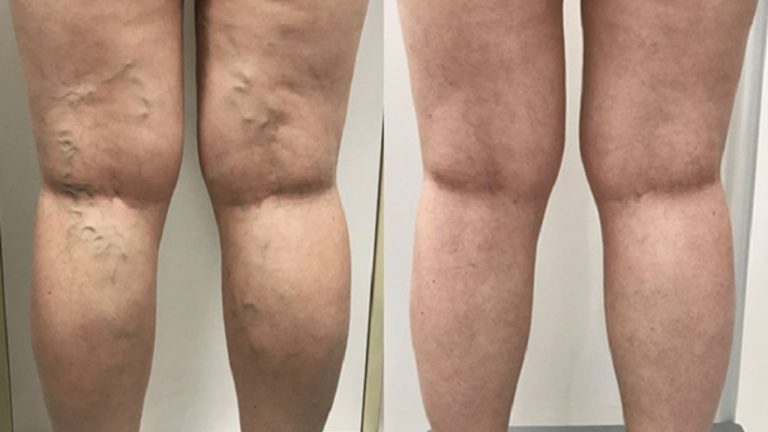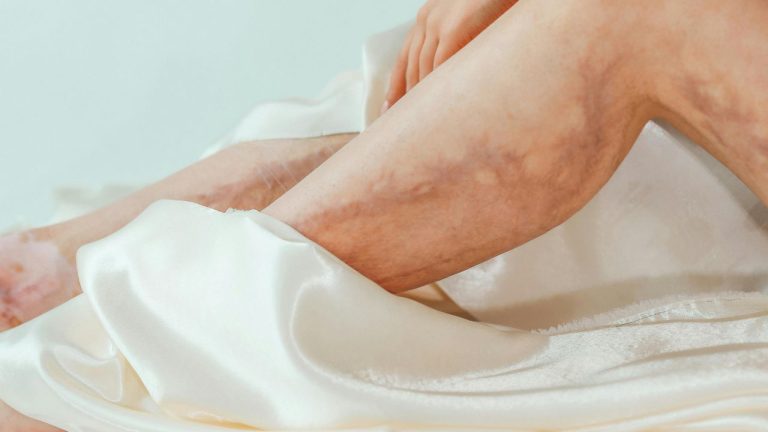Visible veins on the legs, such as spider veins or small varicose veins, are a common cosmetic concern for many adults. While usually harmless, these veins can affect confidence and sometimes cause mild discomfort. Cosmetic sclerotherapy is a popular, minimally invasive treatment designed to eliminate these unwanted veins and restore smoother, healthier-looking skin.
This comprehensive guide explains everything you need to know about cosmetic sclerotherapy, including how it works, what to expect, the benefits, cost, and aftercare.
What is Cosmetic Sclerotherapy?
Before diving into the procedure itself, it’s important to understand what cosmetic sclerotherapy is and who it is designed for.
Cosmetic sclerotherapy is a medical procedure used to treat small, superficial veins, primarily spider veins and minor varicose veins. During the treatment, a solution called a sclerosant is injected directly into the targeted vein. This solution irritates the vein lining, causing it to collapse and gradually be absorbed by the body over a few weeks.

While sclerotherapy is mainly used for aesthetic purposes, it can sometimes relieve mild symptoms such as leg heaviness, swelling, or fatigue. It is non-surgical, minimally invasive, and performed in an outpatient setting.
How Does Sclerotherapy Work?
Understanding the mechanism behind sclerotherapy helps patients set realistic expectations and understand how results are achieved.
The procedure works by disabling the targeted veins, which are then reabsorbed naturally by the body:
- The treatment area is cleaned and sometimes numbed with a local anesthetic.
- A fine needle is used to inject the sclerosant into the vein.
- The injected solution causes the vein walls to stick together and collapse.
- Over 3-6 weeks, the body absorbs the treated vein, redirecting blood flow to healthy veins nearby.
Modern techniques allow treatment of spider veins, reticular veins, and smaller varicose veins with minimal discomfort.
Who is a Good Candidate for Cosmetic Sclerotherapy?
Before considering treatment, patients should know if they are suitable candidates for sclerotherapy.
Ideal candidates include:
- Adults with visible spider veins or small varicose veins
- Individuals seeking aesthetic improvement for smoother, clearer legs
- Patients experiencing mild discomfort, such as leg heaviness or fatigue
- Individuals in good overall health without deep vein thrombosis or severe vein disease
Patients with severe venous insufficiency, blood clotting disorders, or pregnancy may need medical evaluation before treatment.
5 Benefits of Cosmetic Sclerotherapy
It’s helpful to understand the potential advantages of sclerotherapy before deciding on treatment. Sclerotherapy offers both aesthetic and functional benefits:
- Eliminates visible veins: Spider veins and small varicose veins gradually disappear.
- Improves skin appearance: Legs look smoother, more even-toned, and healthier.
- Boosts confidence: Patients often feel more comfortable wearing shorts, skirts, or swimwear.
- Minimal downtime: Most patients can resume normal activities immediately.
- Relieves mild symptoms: Can reduce minor swelling, heaviness, or discomfort in treated areas.
Results usually appear within 3-6 weeks, with full improvement over 2-3 months.
The Sclerotherapy Procedure – Step by Step
Knowing what happens during the procedure helps reduce anxiety and ensures patients are prepared.
- Consultation: A vein specialist evaluates the veins and determines if sclerotherapy is suitable.
- Preparation: The treatment area is cleaned, and in some cases, a topical numbing cream is applied.
- Injection: A fine needle delivers the sclerosant into the vein. Multiple injections may be needed depending on the vein size and number.
- Compression: After treatment, compression stockings or bandages are applied to enhance results and reduce bruising.
- Follow-up: Patients may require 1-3 sessions for optimal results.
Each session typically lasts 15-45 minutes, depending on the area treated.
Recovery and Aftercare
Recovery expectations are important to ensure optimal results and avoid complications.
Recovery from sclerotherapy is straightforward:
- Walk immediately after the procedure to improve circulation.
- Wear compression stockings for 1–2 weeks to support healing.
- Avoid prolonged standing, hot baths, or intense exercise for a few days.
- Minor bruising or redness may occur but usually resolves within 1-2 weeks.
Following post-procedure instructions ensures optimal vein closure and results.
Risks and Side Effects
Like any medical procedure, sclerotherapy carries some risks, and understanding them helps patients make informed decisions.
Sclerotherapy is generally safe, but some mild side effects may occur:
- Temporary bruising, redness, or itching at injection sites
- Small skin discoloration (hyperpigmentation) that fades over time
- Tiny, superficial blood clots in treated veins
- Rare allergic reaction to the sclerosant
Serious complications are very rare when performed by a trained specialist.
Cost of Cosmetic Sclerotherapy
Understanding the potential costs of sclerotherapy helps patients plan financially and make informed decisions before undergoing treatment. Several factors influence the total price, and costs can vary widely depending on individual circumstances.
Factors Affecting Cost:
- Number and size of veins: Larger or more numerous veins require more injections and sessions, increasing total cost.
- Number of sessions needed: Some patients achieve results in one session, while others may require 2–4 sessions for optimal outcomes.
- Geographic location: Clinics in major cities or high-cost areas often charge more than suburban or smaller-town clinics.
- Clinic reputation and specialist experience: Highly experienced vein specialists or clinics with advanced equipment may charge higher fees but often provide better results and fewer complications.
- Treatment area complexity: Curvy, deep, or hard-to-reach veins may require more time and expertise, adding to the cost.
Average Cost Range:
- $300–$600 per session for small areas such as individual clusters of spider veins.
- Multiple sessions may be required for extensive networks or both legs.
- The total cost can range from $600 to $2,000 or more, depending on the area treated and the number of sessions.
Insurance Considerations:
- Cosmetic sclerotherapy is usually not covered by insurance, as it is considered an elective procedure for aesthetic purposes.
- Insurance may cover sclerotherapy if medically necessary, such as for pain relief, swelling, or treatment of venous insufficiency. Always confirm coverage with both your provider and insurance company.
Tips to Manage Costs:
- Ask your clinic about package deals for multiple sessions.
- Compare quotes from different clinics without compromising quality.
- Consider combining cosmetic and medical treatments if you have underlying vein issues.
- Check if financing options or payment plans are available to spread the cost over time.
Frequently Asked Questions (FAQ)
How long do results last?
Treated veins are permanently closed and will not reappear. However, new spider or varicose veins can develop over time due to factors like genetics, aging, hormonal changes, or lifestyle habits. Maintaining a healthy lifestyle and following post-treatment guidelines can help reduce the appearance of new veins.
Is sclerotherapy painful?
Most patients report only mild discomfort during the procedure, usually described as a brief pinprick or slight stinging sensation when the sclerosant is injected. The pain is generally minimal, and no general anesthesia is needed. Most people tolerate the procedure well and can resume activities immediately.
Can I treat veins on my face with sclerotherapy?
Sclerotherapy is primarily designed for legs, treating spider veins and small varicose veins. Facial veins are delicate and usually require laser therapy instead, which targets smaller vessels safely without injections. A vein specialist can determine the best treatment method based on location and vein size.
How soon can I resume normal activities?
Patients are encouraged to walk immediately after treatment to improve circulation. Most daily activities, including work, can be resumed the same day. However, strenuous exercise, heavy lifting, or long periods of standing should be avoided for several days to allow proper vein healing and optimal results.
Are there alternatives to sclerotherapy?
Yes. Depending on vein size, depth, and location, alternatives include laser therapy, radiofrequency ablation (RFA), or combination treatments. Your vein specialist can recommend the most effective method to achieve aesthetic improvement and address any underlying venous issues safely, often combining treatments for the best results.
Conclusion
Cosmetic sclerotherapy is a safe, effective, and minimally invasive procedure for treating spider veins and small varicose veins. It improves both appearance and minor discomfort, with minimal downtime.
Consulting a board-certified vein specialist ensures the procedure is appropriate for your vein type, provides personalized treatment planning, and maximizes results. With proper care and follow-up, sclerotherapy can restore smoother, healthier-looking legs and boost confidence.



